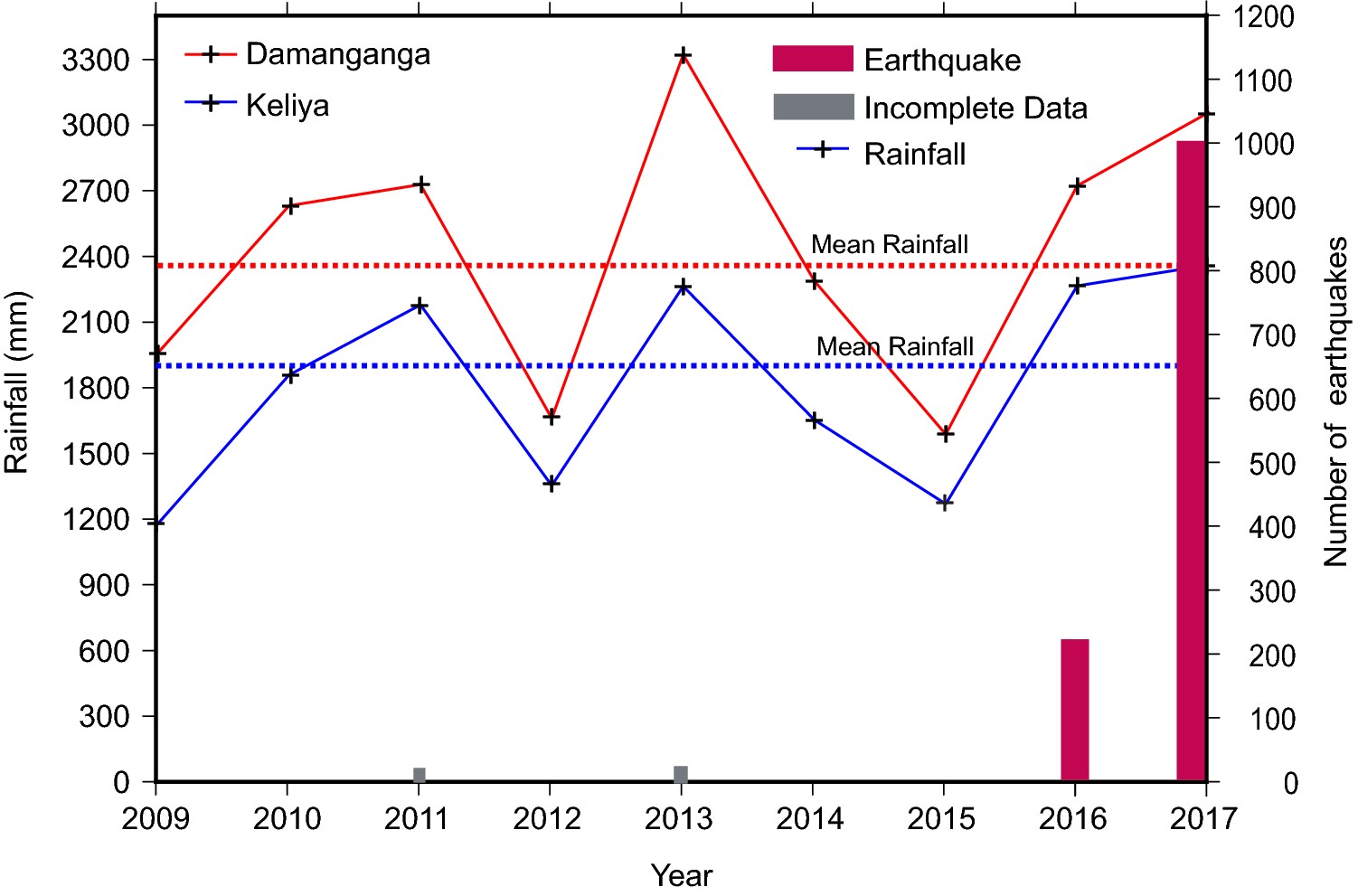Detailed geophysical and geological investigations to identify copper lead and zinc mineralization around Ambaji, Banaskantha district are in progress.

 Skip To Main Content
Skip To Main Content
South Gujarat, a part of the northwestern Deccan Volcanic Province of India has been experiencing episodic swarm activity with reports of sounds, whose association remains unclear. After the Indian monsoon period, during the month of September 2016, a swarm activity occurred around the Keliya dam in the Navsari district of South Gujarat and nearby villages in the Dadra and Nagar Haveli (DNH), which continued for about 4 months. Again, the swarm activity recurred during the month of August 2017 and continued for about 5 months till January 2018. Many of these events were accompanied by audible sounds, like blasting, that caused severe panic among local occupants. A local network of four stations was installed to monitor the swarm activity, in addition to the Gujarat state seismic network. A total of 1048 earthquakes were located around the Keliya dam and 229 events in the DNH region from September 2016 to June 2018. In the present study, we performed a spectrogram analysis of the events with associated sounds. The analysis revealed significant energy at frequencies ≥ 20 Hz, in the audible frequency range. The relocated earthquake distribution shows that seismicity in the Navsari district follows a ~ NW–SE trend, confined to an area of 13 km × 2 km with a depth extent of 3 km. The trend is similar in the DNH region, confined to an area of 15 km × 2 km, down to a depth of 6 km. The determined focal mechanism in DNH region shows strike-slip faulting. The seismicity patterns seem to corroborate with the trends of the lineaments/dykes in the region. In general, the swarm-type earthquake sequences seem to occur when the annual rainfall exceeds the mean annual rainfall. We speculate that the present swarm activity, noticed with some delay after the Indian summer monsoon season, may be due to the phenomenon of hydro-seismicity.

The distribution of total events per year highlighted by vertical bar and the annual rainfall (mm)
Sateesh, A., Mahesh, P, Singh, A.P., Kumar, S., Chopra, S., Kumar, M.R. (2019), Are Earthquake Swarms in South Gujarat, Northwest Deccan Volcanic Province of India Monsoon induced? Environmental earth sciences, DOI: 10.1007/s12665-019-8382-1.
Copyright © 2017 - All Rights Reserved by - Official Website of Institute of Seismological Research, Government Of Gujarat, India.
Note: Content on this website is published and managed by Institute of Seismological Research.
For any query regarding this website, please contact the web information manager Mr. Jignesh Patel (Technical Officer) : email id-dg-isr[at]gujarat[dot]gov[dot]in
